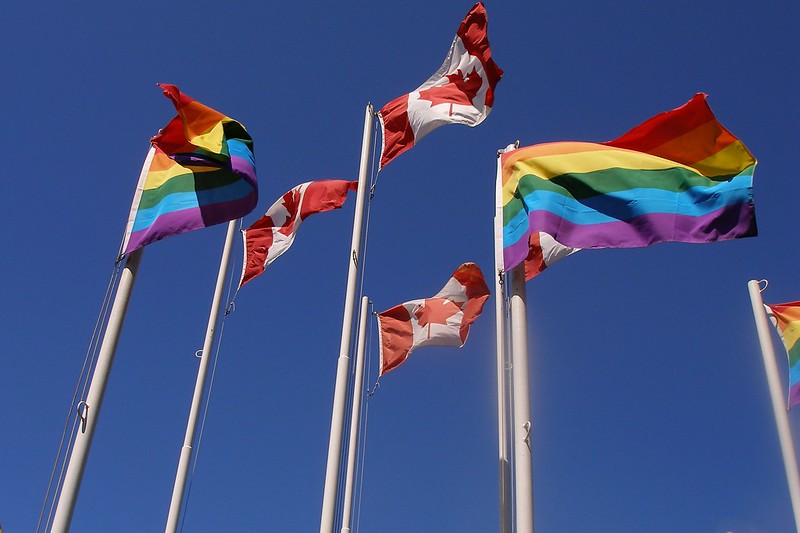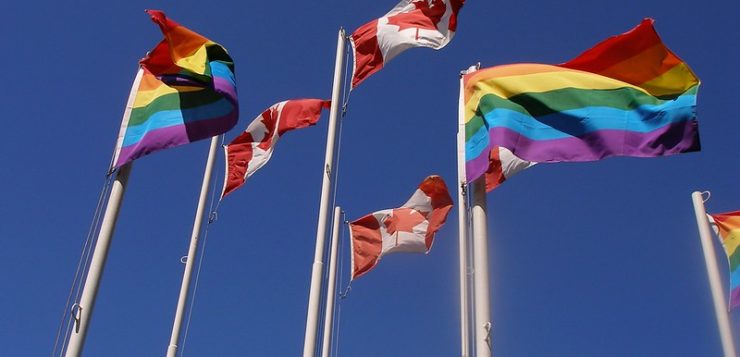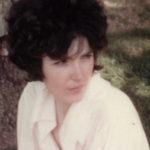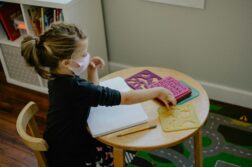
Two years after 9/11, armed guards stood atop barricades surrounding the US Embassy in London. The line to enter the embassy snaked around the building, and a staff person barked orders to those waiting to be called in: “Have your papers ready or you’ll be sent to the back of the line.” L. clutched her papers to her chest and bit her lower lip. My stomach churned as I watched her progress in the line toward the entrance. My country’s embassy had become a hostile fortress, but it was the gateway to our future life together.
Once inside, a dour, middle-aged immigration official at the window rifled through L.’s paperwork, which she had so carefully prepared. “You’re too young not to work for six months,” she said, not bothering to look at L. as she stamped “visa denied” on her British passport.
When L. slowly emerged from the embassy with heavy steps, tears streaming down her face, I felt my chest tighten. We couldn’t believe it. It was just so arbitrary and unfair. L. was an upstanding citizen, fifty years old, a hard worker with an unblemished record. Was the immigration officer having a bad day? Jealous of someone her age taking six months off to travel? It made no sense.
With my head buzzing, I balled my hands into fists and strode off to take some deep breaths and cool down. With a “visa denied” stamp in her British passport, L. would have difficulty coming to the U.S. at all, even under the ninety-day visa waiver program. This did not bode well for our desire to live together for the rest of our lives.
It had been a long journey to this point from our first meeting and brief affair in London in 1981. When a Washington D.C.–London relationship became too daunting, we exchanged letters and emails over the years until our reunion just a few months earlier. Now, both in our early fifties, we’d never had the privilege of living together, and we were not about to let love slip away again.
Returning to L., I took her arm and we walked. Tears blurred my vision and L. was too stunned to speak. She had given up everything—her job, her home in France—to be with me, a U.S. citizen. Now what?
Eventually, we passed the Canadian embassy and I noticed there were no barricades or armed guards. We kept walking. L. said little, wiping her tears with a Kleenex. Gradually, the buzzing in my head cleared. As we rounded the Square again, I stopped in front of the Canadian embassy. “Let’s find out if we can live together in Canada,” I said.
L.’s eyes widened. “Why not?”
We entered the embassy through an unlocked front door where a matronly woman smiled at us from behind a wooden counter. “How can I help you?”
Disarmed by her friendliness, I blurted out. “We want to move to Canada … to live together.”
Thus began a process that would take years to complete. In 2003, Canada used a point system to determine if someone was eligible to become a landed immigrant. Though we both had advanced degrees, points were taken away for each year over fifty. If we applied singly, I would not have enough points. L., who spoke French fluently and was two years younger, did have enough. The catch? To apply as domestic partners we had to have lived together for one year or more.
The next several months were as gray as winter in Vancouver. Though L. was eventually able to enter the U.S. for up to ninety days, we knew she would have to leave at the end of that time. Though I was still working in the U.S., I faced the prospect of having to spend several months in Canada or Britain to accumulate the twelve months of living together to qualify to become Canadian immigrants—assuming we could pop back and forth between countries and not overstay.
In late February of 2004, both of us near despair because L. would have to leave the U.S. soon. We were having brunch with a friend when she suggested that she could hire L. to work in her school. I grabbed L.’s arm. “Why don’t I hire you?” I had my own company. Her background could qualify her to become a technical writer. Why not?
The next two weeks were a scramble. We contacted an immigration attorney, gathered letters, wrote a job description, had degrees certified—all to apply for an H1-B visa for L. to work in the U.S. for three years—enough time for us to meet the cohabitation requirement to become permanent residents of Canada. We knew it was a gamble. Such visas were very limited and usually sucked up by tech companies in the first month the quota was offered.
For the next couple of weeks, it felt like I’d breathed in and never exhaled. L. began arrangements to leave the U.S. and stay for several months with friends in Canada. I would join her when I could. We were in limbo, afraid to hope.
Two days before L. was required to leave, we got the letter. My heart pounding, I tore open the envelope. Then I bounced into the living room whooping. “You got the Visa!”
We traveled to Vancouver to the U.S. Consulate as required for L. to pick up the visa. This time her interaction with the immigration officer was friendly. After a celebratory meal of dim-sum in a nearby restaurant, we took the ferry to Vancouver Island just to look around for potential places to live if and when we were approved as Canadian permanent residents.
A realtor drove us to the top of a mountain to see a log house perched in a grove of firs. It seemed too early to be buying a house but when we walked into the massive structure and the realtor rounded the corner, I elbowed L. and we gave each other the thumbs up. We hadn’t even seen the price or the view of the Olympic Mountains, Victoria, and the Strait of San Juan de Fuca, but we knew it would be our new home.
We didn’t even know if we could live together successfully, surviving the daily grind that can erode a partnership. Though some might have thought us reckless, we had persevered, come to a crossroads, and overcome barriers when the odds were against us.. Sometimes that makes a relationship even stronger. It certainly has for us.
As a physician, Patricia has published many articles and book chapters during her long career as a medical doctor. Now retired after nearly forty years of medical practice, she has written her first very personal and frank LGBTQ memoir about coming out as a lesbian in the late 1960s and training to become a doctor.







